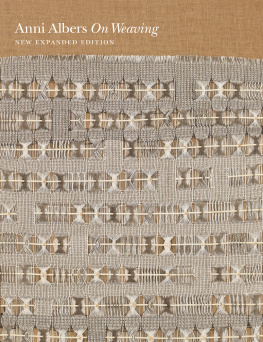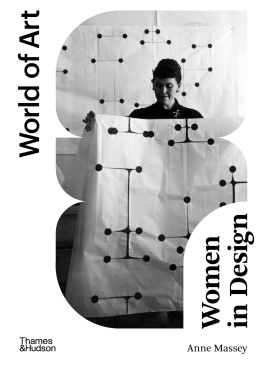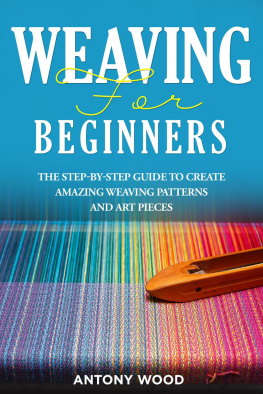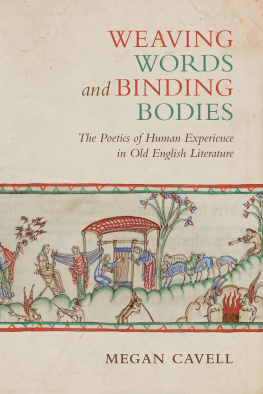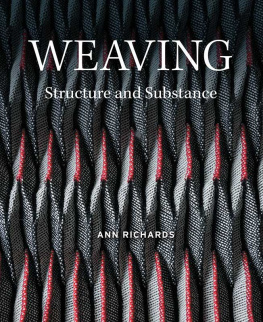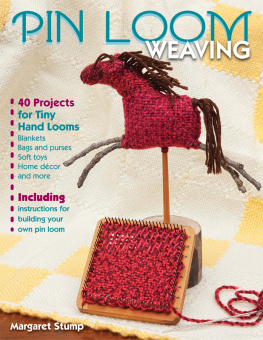
Anni Albers On Weaving

Anni Albers
On Weaving
NEW EXPANDED EDITION
With an afterword by Nicholas Fox Weber
and contributions by Manuel Cirauqui and Tai Smith
Princeton University Press
Princeton and Oxford
in association with The Josef and Anni Albers Foundation
Copyright 2017 by The Josef and Anni Albers Foundation
Original edition copyright 1965, 1993, 2003 by Anni Albers
, Weaving, Hand copyright 1963 by Encyclopdia Britannica, Inc., reprinted by permission. Brief excerpt from Labyrinths by Jorge Luis Borges, translated by James E. Irby; copyright 1962, 1964 by New Directions Publishing Corp; copyright in the World excluding the U.S. 1995 by Maria Kodama; by permission of New Directions Publishing Corp. and The Wylie Agency (UK) Ltd.
Requests for permission to reproduce material from this work should be sent to Permissions, Princeton University Press
Published by Princeton University Press, 41 William Street, Princeton,
New Jersey 08540
In the United Kingdom: Princeton University Press, 6 Oxford Street,
Woodstock, Oxfordshire OX20 1TR
press.princeton.edu
Published in association with The Josef and Anni Albers Foundation
Frontispiece illustrations: (page ii) Anni Albers in her weaving studio at Black Mountain College, 1937; (page vi) detail of plate 119; (page viii) detail of plate 115; (page x) detail of plate 116; and (page xii) detail of plate 113.
Jacket illustrations: (front) Anni Albers, Variations on a Theme, 1958. Cotton, linen, and plastic, 34 30 in. (87.6 77.5 cm). Private Collection. 2017 The Josef and Anni Albers Foundation/Artists Rights Society, New York/VG Bild-Kunst, Bonn. Photo: Tim Nighswander/Imaging4Art; (back) Back-strap loom (diagram) of the type used in Peru. Image #123725. The American Museum of Natural History Library, New York.
All Rights Reserved
Library of Congress Cataloging-in-Publication Data
Names: Albers, Anni, author. | Weber, Nicholas Fox, 1947 | Cirauqui, Manuel. | Smith, Tai Lin, 1975
Title: On weaving / Anni Albers ; with an afterword by Nicholas Fox Weber and contributions by Manuel Cirauqui and Tai Smith.
Description: New expanded edition. | Princeton, New Jersey : Princeton University Press, 2017. | Includes bibliographical references.
Identifiers: LCCN 2017020109 | ISBN 9780691177854 (hardback)
Subjects: LCSH: Textile design. | Weaving. | BISAC: ART / Individual Artists / General. | DESIGN / Textile & Costume. | ART / Techniques / General. | ART / History / Contemporary (1945-).
Classification: LCC TS1475 .A42 2017 | DDC 677/.028242--dc23 LC record available at https://lccn.loc.gov/2017020109
British Library Cataloging-in-Publication Data is available
Designed by Yve Ludwig.
This book has been composed in ITC New Baskerville and Whitney.
Printed on acid-free paper. 
Printed in Italy
10 9 8 7 6 5 4 3 2 1
Dedicated to my great teachers, the weavers of ancient Peru.

Contents
Nicholas Fox Weber
|
Manuel Cirauqui
|
Tai Smith
|

Introductory Note
Perhaps I should start out by saying that this book is not a guide for weavers or would-be weavers, nor is it a summary of textile achievement, past or present. It is incomplete in that it does not take up many of the facets that together constitute the enormous field that is weaving. A vast literature has accumulated on this subject, each contribution taking up some of its many aspects. I approached the subject as one concerned with the visual, structural side of weaving rather than that dealing with the problem of warmth, for instance, or such new attributes, developed by chemistry, as being water repellent, crease-resistant, flame-retarding, and so on, that are invisible.
My concern here was to comment on some textile principles underlying some evident facts. By taking up textile fundamentals and methods, I hoped to include in my audience not only weavers but also those whose work in other fields encompasses textile problems.
This book, then, is an effort in that direction.
April 1965
A.A.

Preface
I am in the fortunate position of being able to introduce my subject by quoting from the Encyclopdia Britannica without being accused of plagiarism. For the article Weaving, Hand in it is written and signed by me. I tried to sum up there the essentials of weaving within the number of words allotted me, and thus the article is as concise as I was able to make it. To rewrite it would mean copying myself.
Though I am dealing in this book with long-established facts and processes, still, in exploring them, I feel on new ground. And just as it is possible to go from any place to any other, so also, starting from a defined and specialized field, can one arrive at a realization of ever-extending relationships.
Thus tangential subjects come into view. The thoughts, however, can, I believe, be traced back to the event of a thread.

Anni Albers On Weaving
CHAPTER ONE
Weaving, Hand
One of the most ancient crafts, hand weaving is a method of forming a pliable plane of threads by interlacing them rectangularly. Invented in a preceramic age, it has remained essentially unchanged to this day. Even the final mechanization of the craft through introduction of power machinery has not changed the basic principle of weaving.
Other techniques had been devised to the same end: single element techniqueslooping, netting, knitting, crochetingand multiple element techniquesknotting, coiling, twining, braiding. In weaving, in the latter group, one system of threads, the warp, crosses another one, the weft, at right angles, and the manner of intersecting forms the different weaves.
Gradually the various phases of manipulating warp and weft were mechanized until the technique of weaving surpassed all others in efficiency.
Whereas single-thread methods can be handled with few tools, weaving needs more complicated equipment since the warp has to be given tension. The device giving such tension is the loom. Weaving, then, is the process of passing the weft between taut, alternately raised warps, as in the basic plain weave, or between other combinations of selected warps, and pressing it into place.
Earliest weaving was done on the warp-weight loom, where warps were suspended from an upper bar and weighted at bottom. Weaving here progressed downward, unlike other weaving. It was used in ancient Greece, and, more recently, by Indians of the North Pacific American coast. Next came the two-bar loom, with warp stretched from bar to bar, or, for extended length, wound onto the bars. Used either vertically or horizontally, the warp was held taut by a framework or stakes in the ground. Early Egyptian records show weaving on such a loom which, in vertical position, is also the tapestry loom of today.
Next page
